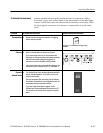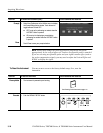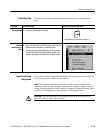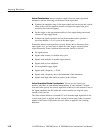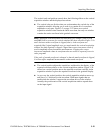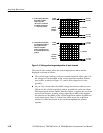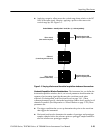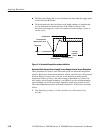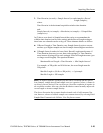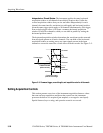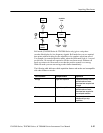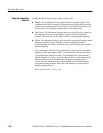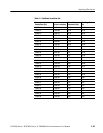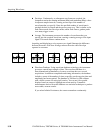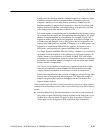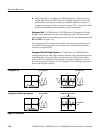
Acquiring Waveforms
CSA7000 Series, TDS7000 Series, & TDS6000 Series Instruments User Manual
3-25
2. Time Duration (seconds) = Sample Interval (seconds/sample) x Record
Length (samples),
where:
Time Duration is the horizontal acquisition window time duration
and:
Sample Interval (sec/sample) = Resolution (sec/sample) = 1/Sample Rate
(samples/sec)
In (2) above, note that it is Sample Interval that varies to accommodate the
window time duration (and its scale setting) and the Record Length setting as
these latter two elements can be set by you. These elements behave as follows:
H If Record Length or Time Duration vary, Sample Interval varies to accom-
modate, up to highest sample rate/lowest sample interval/highest resolution.
H If Sample Interval reaches its lower limit, Record Length must decrease if
Time Duration decreases (you set faster scale settings), or Time Duration
must increase (forcing slower scale settings) if Record Length increases (you
set longer record lengths). The equation becomes:
Maximum Record Length = Time Duration ÷ Min Sample Interval
For example, at 200 ps/div and 10 divisions, the record length must be
500 points:
Max Rec Length = (10 divs x 200 ps/div) ÷ 4 ps/sample
Max Rec Length = 500 samples
NOTE. As implied from the operation just described, resolution and the equiva-
lent elements, sample interval and sample rate (see equation 2 above), cannot be
set directly, but ar e derived. You can, however, check the resolution at anytime in
the resolution readout. Also note, that the Resolution control actually adjusts the
record length to increase sample density.
The above discussion also assumes that horizontal scale is held constant. You
can, however, choose to hold the sample rate constant instead, by selecting Hold
Sample Rate Constant in the Utilities, User Preferences menu.



